In the early 1950s Pierre Jeanneret began a new project at Chandigarh, in India, at the invitation of his cousin Le Corbusier, then at work on a groundbreaking architectural program there. When Le Corbusier opted out halfway through, Jeanneret became the undertaking's chief architect and urban designer. At the same time he created a furniture style to be used for the government offices and a number of private homes.
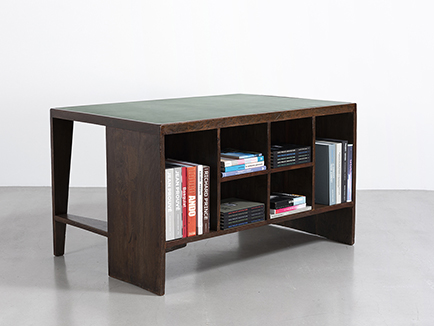
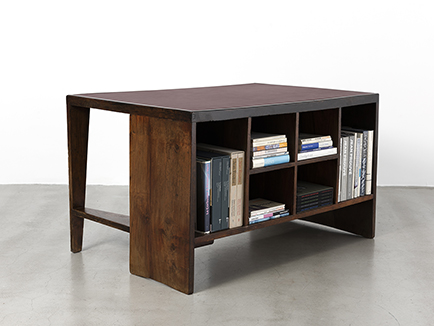
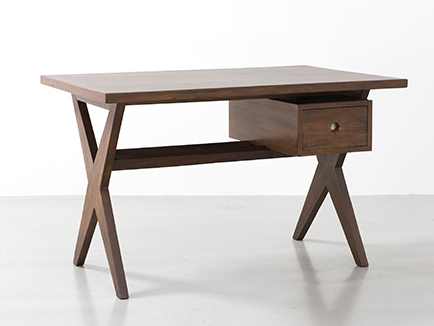
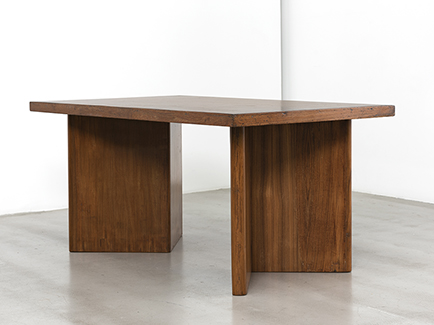
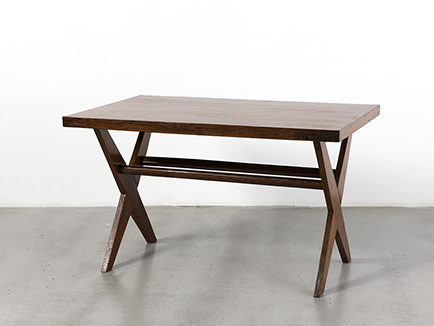
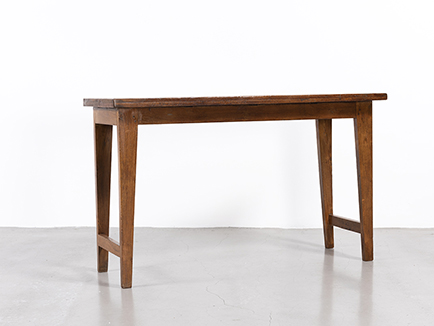
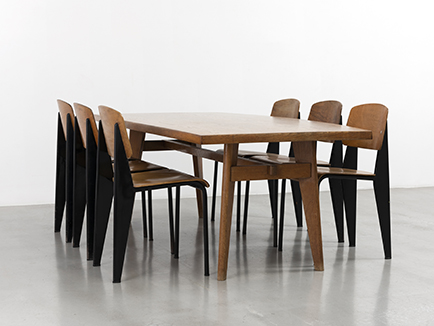
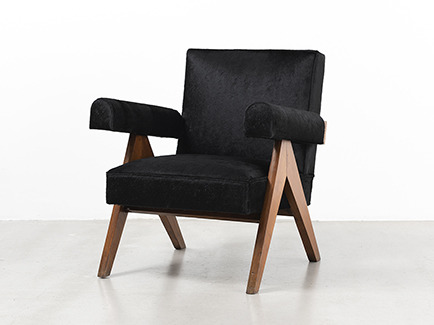
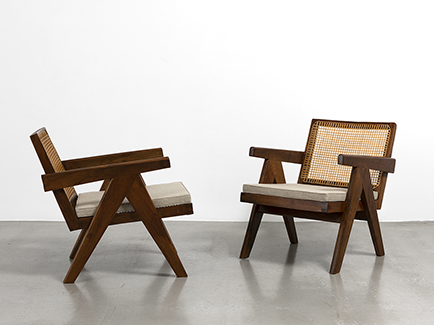
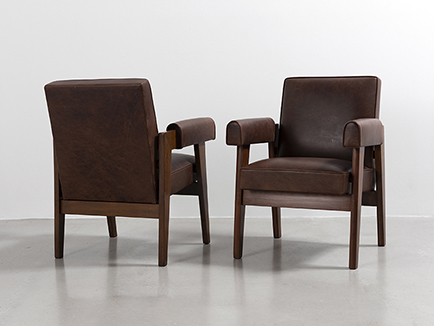
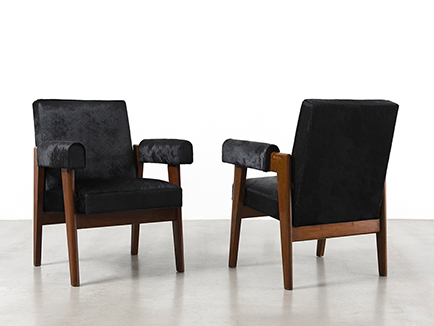
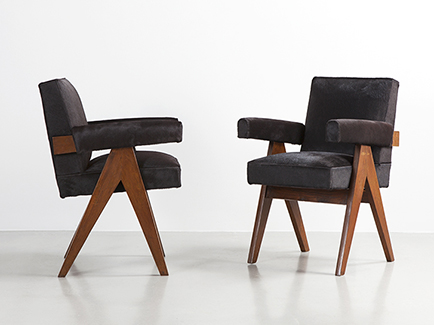
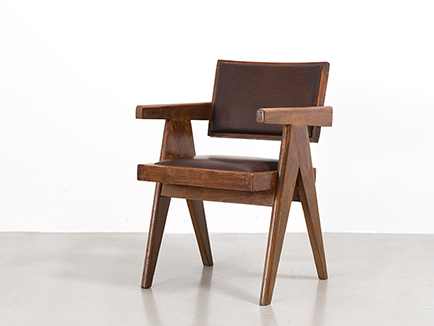
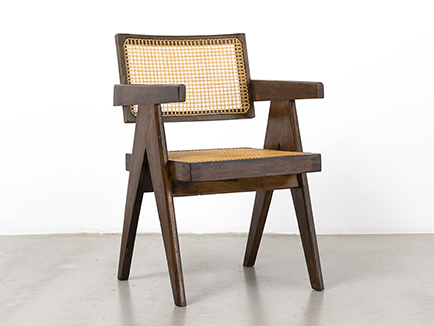
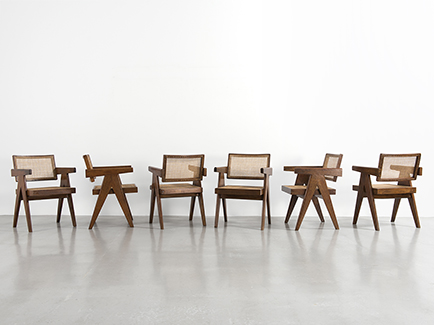
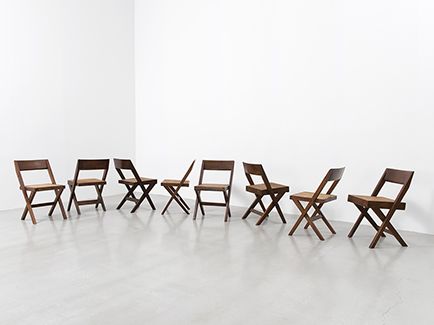
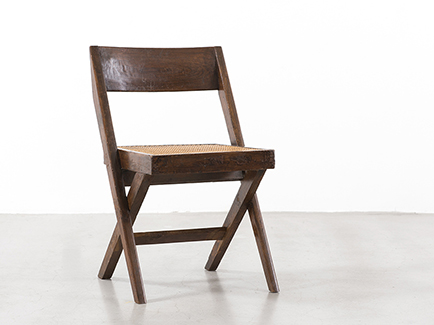
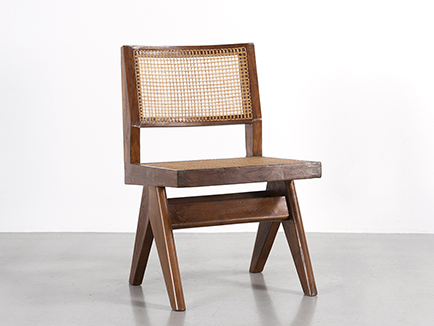
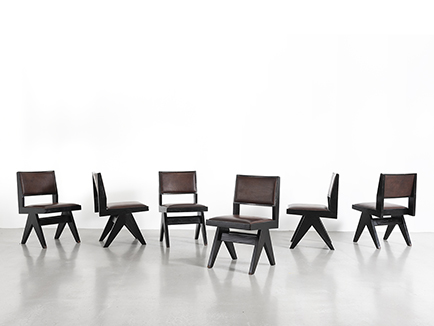
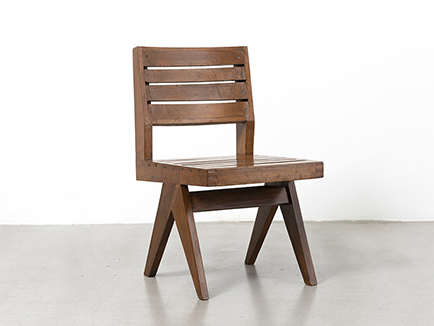
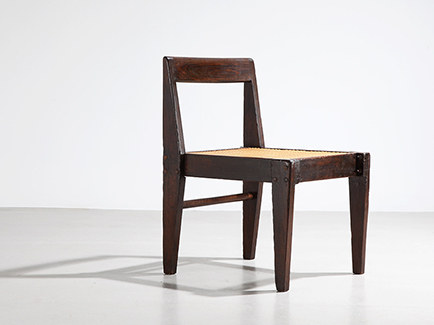
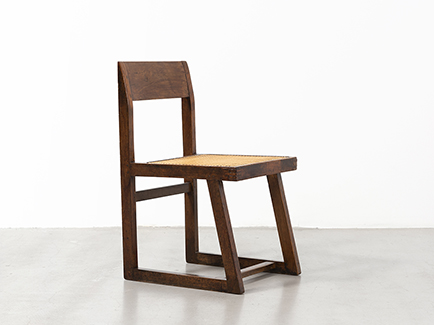
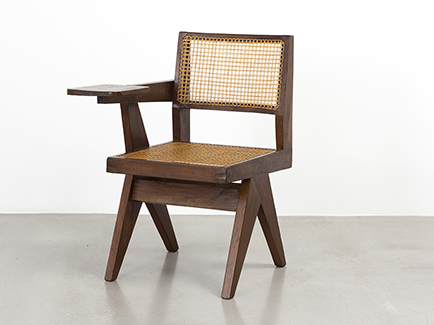
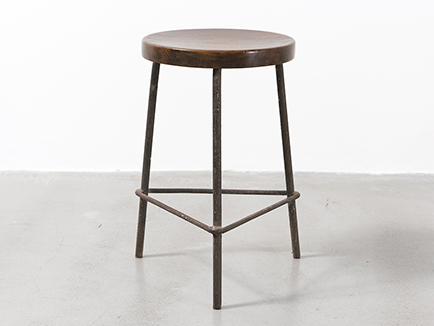
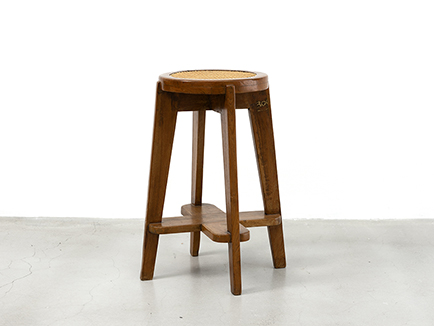
PIERRE JEANNERET
1896
22 March: Pierre Jeanneret is born in Geneva.
1913-1919
Studies architecture at the Ecole des Beaux-Arts in Geneva, with a period of service in the Swiss Army in 1916–17.
1920
January: leaves Switzerland and works for the Perret brothers in Paris.
Designs the covers for the magazine L’Esprit nouveau, founded in October.
1921<
July: while continuing with the Perrets, he begins to work on the Berque commission with Le Corbusier (the pseudonym adopted a year earlier by his cousin Charles-Édouard Jeanneret).
Berque house project (Paris).
Salon d’Automne in Paris: he shows plans for a modern city of 3 million people.
Apartment block/villas program for the Société Franco-Américaine.
Gault house project (Paris).
1923-1924
Besnus house (Vaucresson).
Ozenfant artist’s studio (Paris).
Raoul La Roche and Lotti Raaf-Jeanneret house (Paris).
Studios for sculptors Lipchitz, Mietschaninoff and Canale (Boulogne-sur-Seine).
1924<
During the summer, he and Le Corbusier move into 35 Rue de Sèvres (Paris). The Frugès commission in Pessac sees them working with a team for the first time.
1925-1927
Cité Frugès (Pessac).
Apartment block/villas program and the Voisin Plan for Paris (1925).
L’Esprit nouveau pavilion (Paris, 1925).
Palais du Peuple dormitory (Paris, 1926).
Minimum house project (1926).
Cook house (Boulogne-sur-Seine, 1926), Guiette house (Antwerp, 1926).
Two houses for Weissenhof in Stuttgart (1927).
Plainex houses (Paris, 1927).
Competition for the League of Nations building in Geneva (1927). Is eliminated after the second phase.
October 1927: Charlotte Perriand begins working with them at 35 Rue de Sèvres (Paris).
1928-1929
Church house (Ville d’Avray).
Creation of a line of furnishings by Le Corbusier, Pierre Jeanneret, and Charlotte Perriand: “Tubes d’avion” table, closets, armchair with tilting back, tilting chaise longue, “Grand confort” armchair (1928).
Villa Savoye (Poissy, 1929-31).
Loucheur houses.
Centrosoyuz office block (Moscow).
Stand at the Salon d’Automne (Paris, 1929): Fixtures
1930-1933
Clarté apartment block (Geneva, 1930-32).
Villa for Madame de Mandrot (near Toulon, 1931).
Palace of the Soviets (Moscow, 1931).
De Beistegui penthouse (Paris, 1931).
Swiss Pavilion at the Cité Universitaire (Paris, 1932-33).
Cité du Refuge (Paris, 1932-33).
Apartment block for the Paris-Parc des Princes real estate company, Rue Nungesser-et-Coli (Paris, 1932-34).
Project for the Schweiz Rentenanstalt building (Zurich, 1933).
Summer 1933: 4th CIAM congress in Athens.
Jeanneret travels aboard the Massilia from Marseille to Athens.
Excursions in the Peloponnesus with Charlotte Perriand.
1934-1935
Urbanization projects for Stockholm, Antwerp, Algiers, Nemours, Zlin. Various city and state competitions.
Peyron holiday house (Les Mathes).
Ferme Radieuse cooperative village project.
Furnishings for a bachelor apartment at the Exposition Universelle (Brussels, 1935).
Weekend house in the suburbs.
1936-1937
Redevelopment of slum district no. 6 (Paris).
Cartesian skyscraper project.
Centre National de Réjouissance (National Center for Celebration) for 100,000 participants in the Bois de Vincennes.
As part of the preparations for the 1937 International Exhibition:
Project A – housing exhibition
Project B – Unité d’Habitation: the Bastion Kellermann housing block
Project C – Center for Contemporary Aesthetics for the exhibition
Project D – Pavillon des Temps Nouveaux also known as the Musée d’Éducation Populaire.
Prototype of the sanitary unit shown in the Union des Artistes Modernes pavilion, with Jean Prouvé and Charlotte Perriand.
Project for a dry mounted aluminum bivouac shelter, with Charlotte Perriand and engineer A. Tournon.
Spring 1937: Charlotte Perriand leaves the studio at 35 rue de Sèvres.
1938-1939
Ideal Home Exhibition (London).
“Unlimited growth” museum.
“Maison à sec”.
Winter sport resort in the Vallée de Vars.
Biology research station (Roscoff).
Late 1939: designs light buildings for war refugees. Projects forportal frame buildings with Le Corbusier and Jean Prouvé (temporary schools, village club, housing, etc.).
12 December 1939: creation of the Bureau Central de Construction (BCC) by Georges Blanchon, with Le Corbusier, Pierre Jeanneret, Charlotte Perriand, and Jean Prouvé.
1939-1940
Demountable portal frame structures for the SCAL at Issoire, with Jean Prouvé: housing, dormitories, club, design building, refectory, infirmary, offices, etc.
House projects for the S.P.A (Lannemezan, 1940).
May 1940: Charlotte Perriand leaves for Japan.
June-December 1940: stays at Ozon in southwestern France
with Le Corbusier and his wife Yvonne.
5 December 1940: Pierre Jeanneret joins the BCC in Grenoble; Le Corbusier remains aloof.
1941-1944
Furniture for Georges Blanchon’s office (sideboard, table, desk, screen).
F 8×8 BCC houses with Jean Prouvé (1941-42) in Saint-Auban, Gardanne, Salindres, Brignoles, Lunel, Bédarieux.
Furniture including a table for Jean Prouvé’s family (Nancy).
TCD house.
S4F house.
V5 house.
“101” transportable house.
Furniture and fittings for the home of the sports director at the Solvay plant in Dombasle.
Furnishings for the L’Équipement de la Maison company which takes them over and expands the BCC catalog.
Designs the acronym for the FFI (French Forces of the Interior).
Designs the École des Cadres (Uriage).
F 8×8 – BAPJ house with Jean Prouvé (1944).
1945-1946
Urban development project for Grenoble on the Fort Robeau site.
Refits the Isère département Prefecture building.
Office block project for the Lion Noir company (Lyon).
17 October 1946: he declines Le Corbusier’s invitation to join the ATBAT constructors group.
Trip to the United States: crosses the country with Alexander Calder.
Contract with Knoll for “Chair 92”.
1947-1949
Master plan for Puteaux.
Project for a block of 200 apartments (Puteaux).
Projects for chalets in the Alps.
Project for the FT house in the Paris suburbs.
Called on by Le Corbusier for the renovation of the facades of the Swiss pavilion at the Cité Internationale Universitaire and the Cité du Refuge (Paris).
Plouet house (Ile de Bréhat).
Refuses again to join the ATBAT.
Vocational High School (Béziers, with Domingo Escorsa).
Holiday house project (Frontignan).
1951-1965
January 1951: Pierre Jeanneret joins the team commissioned by the Indian government to build Chandigarh, the new capital of Punjab, with Le Corbusier, Maxwell Fry, and Jane Drew.
Works with Maxwell Fry and Jane Drew until 1954, then on his own with the Chandigarh architects and engineers office.
Numerous programs: individual and collective accommodations for all social classes, the Chandigarh Architects’ Agency, schools, university dormitories, hospitals, library, etc.
Furniture for Chandigarh’s public buildings: High Court, Secretariat, Legislative Assembly, Library, etc.
Gandhi Bhavan, memorial to Gandhi.
Boat prototypes.
In addition to Chandigarh, he undertakes urban development and architectural work in Pandoh, Sundernagar, Slapper, Ahmedabad, and Talwara.
Throughout these years, in addition to his own work, Pierre Jeanneret coordinates the oversight teams for the monumental esplanade designed for the Capitol by Le Corbusier, notably including the Legislative Assembly, the High Court, the Secretariat, and other, more modest building such as the museum and the school of architecture.
1965
August: for health reasons he returns to live with his niece Jacqueline Jeanneret in Switzerland.
1967
4 December: Pierre Jeanneret dies in Geneva.